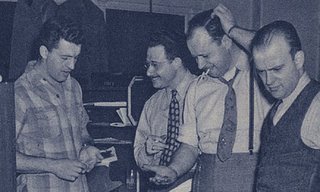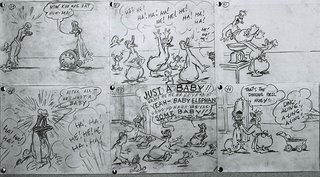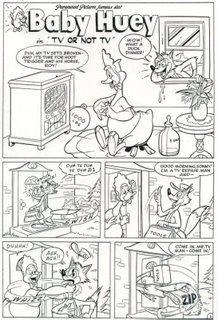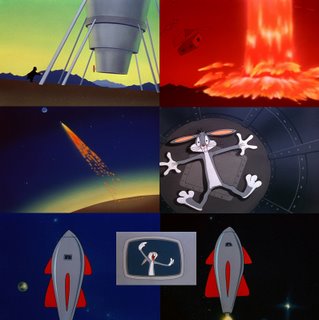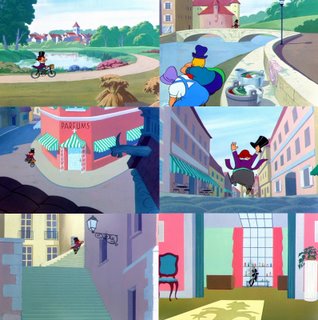Ray Patterson animates this whole opening scene from the cartoon. Like Rod Scribner, Patterson was more concerned with the acting abilities of his characters rather than making them look pretty. You can watch this bit silent and know that Spike is about a second away from murdering Tom. I think he's my personal favorite out of all of the Tom & Jerry animators.
Irv Spence is known for wildness, and was one of Tex Avery's best animators at Warners. He was particularly gifted for animating painful sequences, though not this scene in particular. It sure looks like it hurt when Jerry jabs Tom in the stomach, though!
Ken Muse was used similarly like Bob McKimson at Warners, as he usually was assigned more subtle scenes, like this one of Tom putting Spike to sleep on the Knock-Out Drops. He certainly constructed the characters the best. Actually, come to think of it, doesn't Tom look like an old tyme melodrama villain with those whiskers looking like a mustache? Snidley Whiplash anyone?
I can't say I'm a big fan of Ed Barge's animation though. It's much weaker than the other animators' work, particularly into the 1950s. He seemed more concerned with having the characters look decent without much acting or fluid movement. His work wasfunnier to see in the mid-40s, when it looked like Tom & Jerry were more Harman-Ising-ish than usual. He did everything in this clip, except for Tom running back into the room and startled by Spike's 'growling' (that's Spence again).
Muse picks up with Jerry lifting Spike's eyelid, until Tom does his trademark yell after being bashed on the foot. Spence handles Jerry lighting the dynamite to Spike rolling up his sleeves and running off screen to beat the stuffing out of Tom. Muse picks up again with the pulverized Tom till the iris out.
Lots of cartoons have been based around this theme of keeping quiet. But I think this take on the theme is leagues ahead of any of them. Tom & Jerry do everything the best.


